Clipping in all its forms
In addition to allowing you to work with your horse in winter, clipping offers another secondary but not insignificant advantage : taking care of your horse's « look » in order to give him a sport look and to also improve, by some visual tricks, some of his physical defects. Practical works in pictures.
PLAN LEGEND
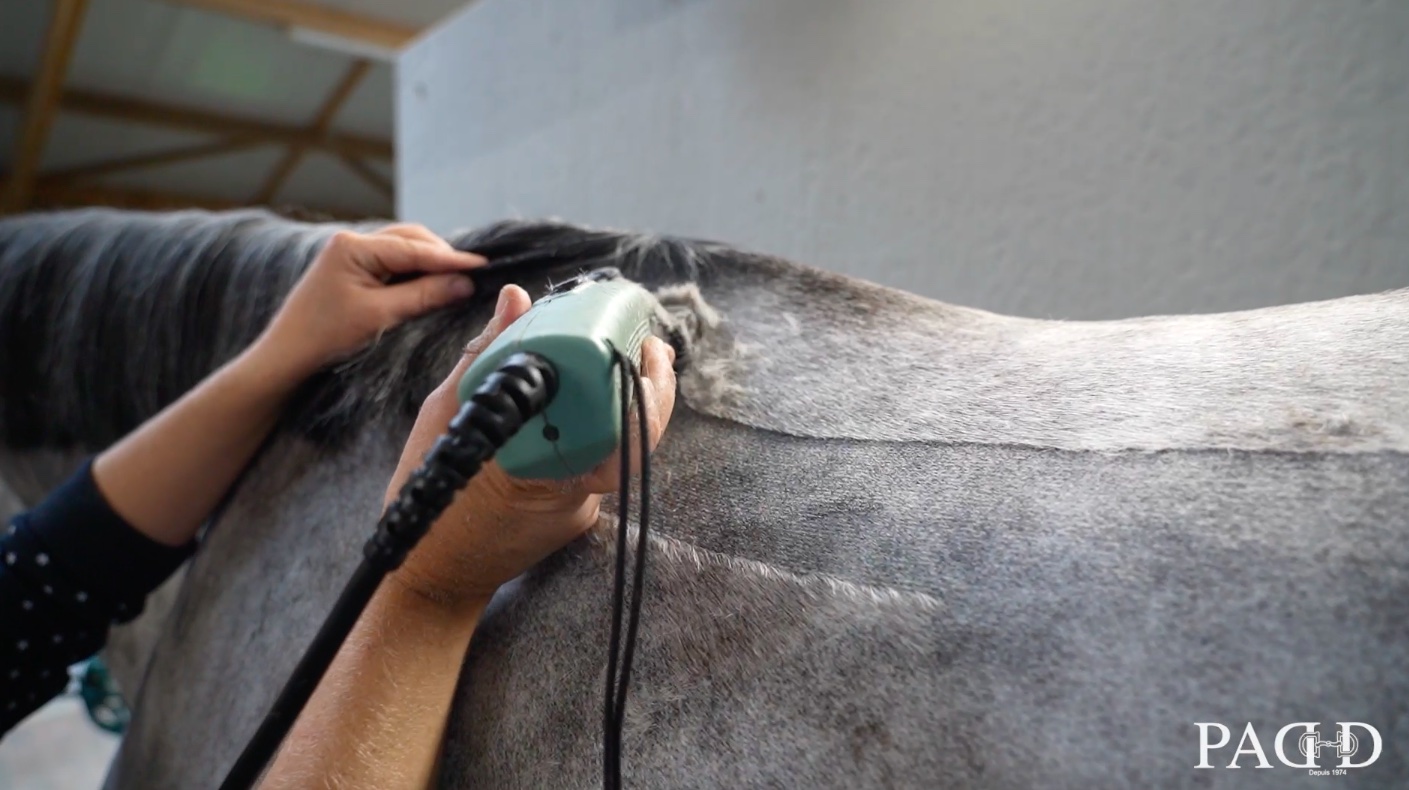
COMPETITION CLIP
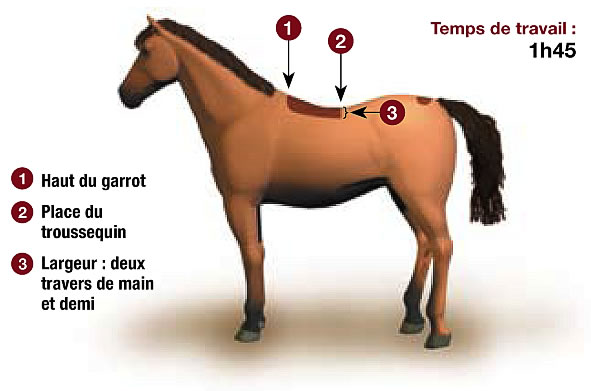
Disadvantages : « Clipping time » (you must be patient and above all not lose your temper). You must know that a badly performed clipping causes a reaction of fear in the horse, which will hardly stand future attempts.
Cautions : You'll find yourself with a stark-naked horse. Therefore, when going out to train use an exercise rug, to be taken away once the horse has warmed up. In the same way, proceed to cover him once in the box according to weather conditions.
TRICKS
• The more the clipping lasts, the faster you lose your nerve. Be patient. Don't forget that the consequence of a « messy » clipping is a frightened or even violent horse.
• In the same way, the longest the clipping, the hottest the combs. Then, don't forget to regularly oil them.
• In order to match the clipping with the horse's body curves, don't forget to make some rounding when changing the clipping direction. For the higher part of the limbs, on the contrary, you will have to choose a straight line.
HUNTER CLIP
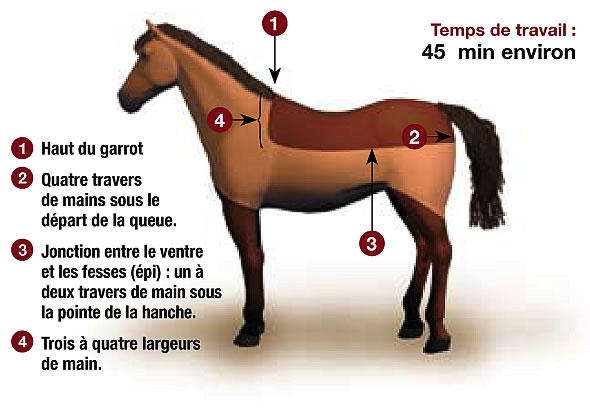
Advantages : Reduced clipping time, it avoids the purchase of an exercise rug, allows to less cover the horse in the box (the most important area to be protected against cold are the loin), decrease of the costs for blankets.
Disadvantages : Medium beauty. It is necessary to regularly make sure that there is no wound under the hair, or skin diseases. This clipping is perfect for a horse subject to a daily training without much effort.
THE LIMBS
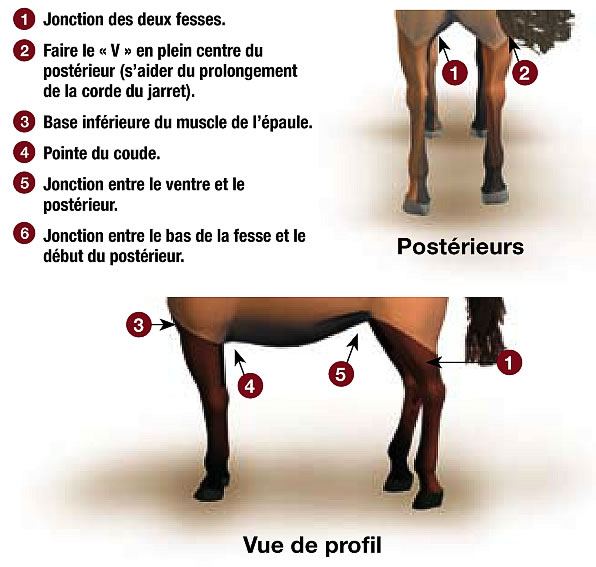
WINTER CLIP
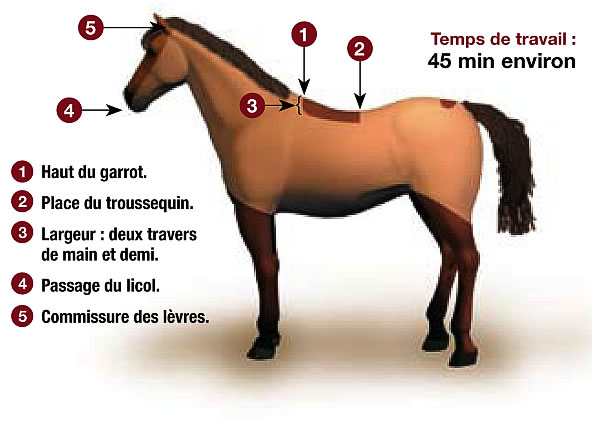
This clipping is suitable for horses who daily train in an intensive way. The horse can normally sweat but dries quickly (if after-training care is followed). If the horse spends the shortest possible time being damp during the Winter, he will practically never cough and will surely be prevented from a « cold shock ».
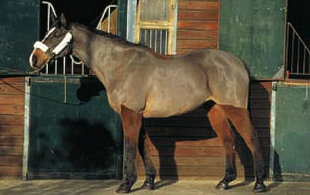
A horse with a Winter clip: not clipped limbs and clipped body.
Advantages :
• Quick clipping.
• Very good training to get a young horse used to clipping, knowing that you touch only fleshy areas and a part of the head avoiding ears.
Cautions :
• Limbs are not clipped. If you shower them, dry them before wearing stable bandages (dampness together with wraps cause scabs, dermatitis, little manges...)
• This clip obliges you to watch over the limbs insistently in order to check possible sores which could be hidden under the hair.
STRIP CLIP
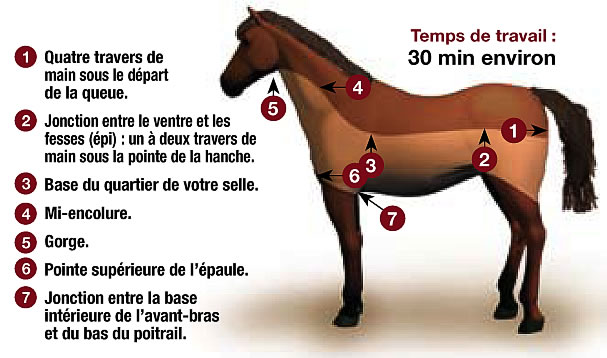
Advantages : Working time, protected back
Disadvantages : Unsightly, heavy look of the horse, a neck that could tend to sweat.
Cautions : Watch over possible sores and skin diseases under the hair. This technique is suitable for people in charge of clipping several horses at the same time; or to horses trained and left in paddock alternately.
OPTICAL ILLUSION
Some horses unfortunately do not have the luck to be gifted with an attractive appearance. It's where the clipping comes on stage, allowing you to correct some little defects. Here are therefore eight « optical illusion » tricks:
1. If your horse has a big head, the solution is clipping it in a sharpening way. You must know that a horse with a thick coat looks dirtier and less good-looking.
2. Nothing is better than a clipping to « lighten » a horse that has a heavy bone structure at limbs level.
3. In order to achieve a more athletic appearance, a big and heavy horse will be fully clipped.
4. For a horse with a long back, adopt a clipping with a pad (in the saddle pad area) a little longer than usual, which stretches backward. The wished target is reducing the gap between the pad end and the horse loins.
5. For a horse with a short back, proceed as above, trying to shorten the pad.
6. For a « skinny » horse, the pad on the back will go down to the three quarters of the saddle flap. In this case it's a matter of trying to make the horse mass look heavier.
7. For a heavy, big and tall horse, make a back pad larger than one hand and a half starting from the horse's spine.
8. If you have a large built horse, try to make not too wide a mark at pad level (saddle pad area), and vice-versa if you have a little horse. The wished target is to make the horse look neither too heavy nor too light at first sight.